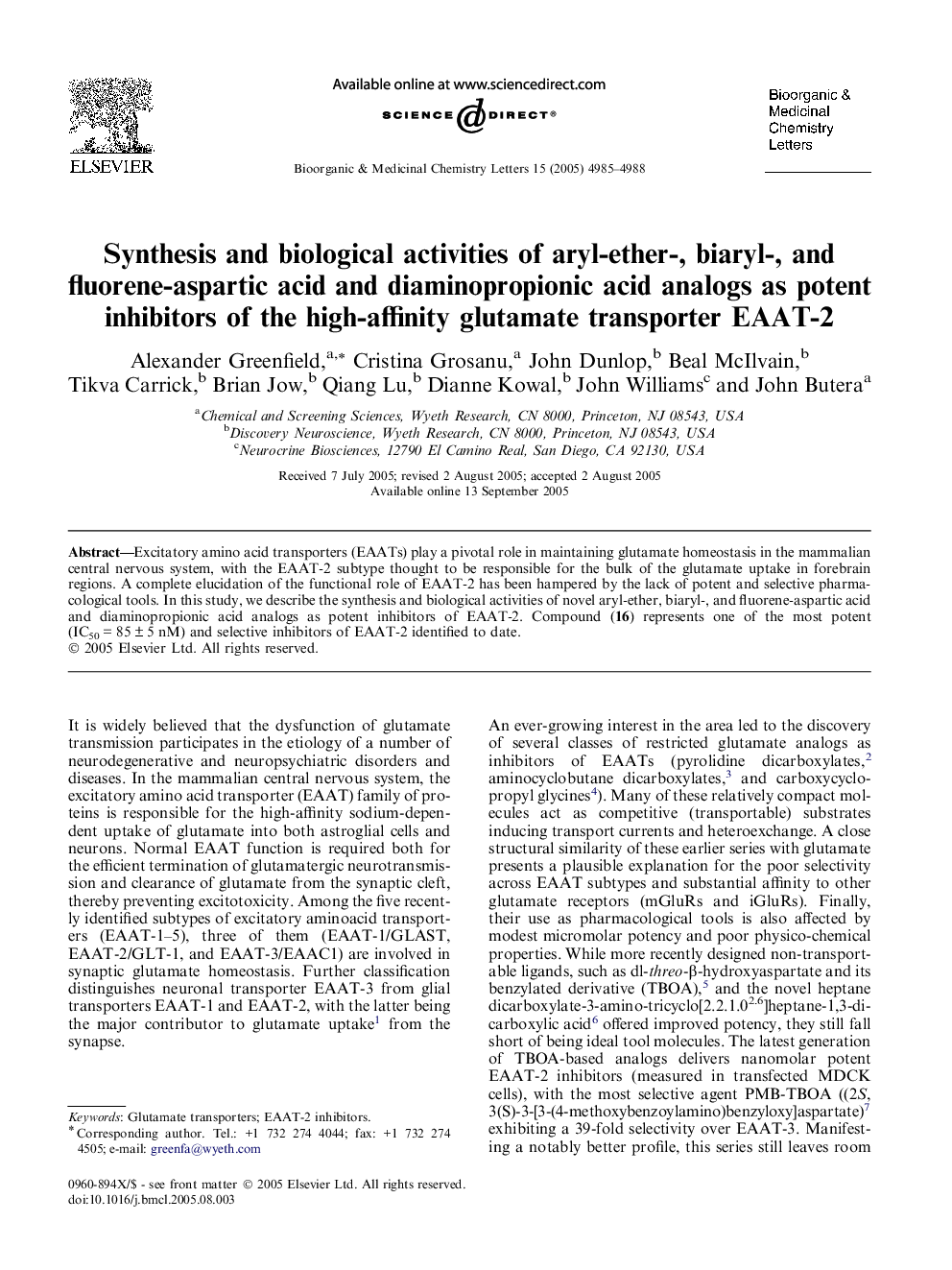| Article ID | Journal | Published Year | Pages | File Type |
|---|---|---|---|---|
| 1378206 | Bioorganic & Medicinal Chemistry Letters | 2005 | 4 Pages |
Excitatory amino acid transporters (EAATs) play a pivotal role in maintaining glutamate homeostasis in the mammalian central nervous system, with the EAAT-2 subtype thought to be responsible for the bulk of the glutamate uptake in forebrain regions. A complete elucidation of the functional role of EAAT-2 has been hampered by the lack of potent and selective pharmacological tools. In this study, we describe the synthesis and biological activities of novel aryl-ether, biaryl-, and fluorene-aspartic acid and diaminopropionic acid analogs as potent inhibitors of EAAT-2. Compound (16) represents one of the most potent (IC50 = 85 ± 5 nM) and selective inhibitors of EAAT-2 identified to date.
Graphical abstractAn extensive SAR study of a series of aspartic and 2,3-diaminopropionic acid amides led to the discovery of 2-bromo-4,5-difluorophenoxy)phenyl]-l-asparagine—one of the most potent, selective, competitive non-substrate inhibitors of EAAT-2 identified to date.Figure optionsDownload full-size imageDownload as PowerPoint slide
